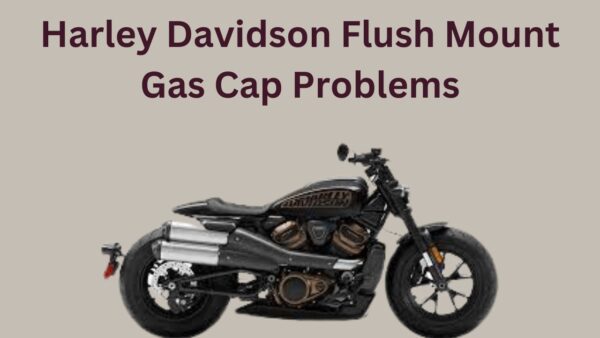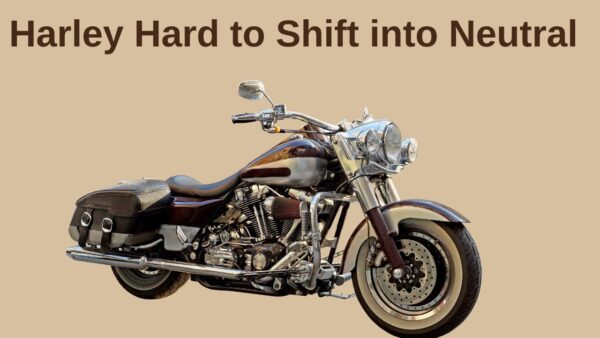The Honda NC750X is renowned for its durability, comfort, and fuel efficiency. However, like any mechanical device, it is not without potential issues.

In this article, we will explore some of the problems reported by owners.
We will also dive into the areas of concern for prospective buyers or current owners seeking to maintain their motorcycle’s performance and longevity.
Honda Nc750x Problems
Some riders have reported experiencing vibrations at higher speeds, which can lead to discomfort during long journeys.

Another concern is the somewhat lacklustre performance of the bike’s dual-clutch transmission (DCT), which doesn’t always provide the level of engagement that more experienced riders might prefer.
However, some users have found the bike’s seat to be somewhat stiff, leading to discomfort on longer rides.
1. Cam Chain Tensioner Issue
The Cam Chain Tensioner Issue is a recurrent problem cited by some Honda users. This component is responsible for maintaining the correct tension in the cam chain, ensuring a smooth and quiet engine operation.
When it fails, the chain can become excessively slack or tight, leading to erratic engine behaviour.
Users have reported a rattling noise, particularly during cold starts. This is usually the first sign of a failing tensioner.
If it’s left unchecked, this issue might lead to serious engine damage as the chain could potentially jump a tooth on the camshaft sprocket, causing a timing issue.
To rectify this, replacing the tensioner is usually the recommended course of action. Some users prefer to use manual tensioners, while others opt for hydraulic tensioners.
Manual tensioners give you more control but require regular adjustment. Hydraulic tensioners, on the other hand, adjust themselves automatically but can fail over time.
2. Excessive Vibration
However, motorcycles inherently vibrate due to the nature of their engine design; excessive or abnormal vibration can lead to discomfort and reduced vehicle performance.
In the case of the Honda NC750X, these vibrations typically originate from the engine, more precisely, the twin parallel engine configuration.
They tend to be more noticeable at higher speeds or when the motorcycle is under increased load.
There are a few strategies you can employ to mitigate this issue:
- Ensuring your motorcycle receives regular maintenance. This includes frequent oil changes, checking and adjusting valve clearances, and ensuring the spark plugs are in good condition.
- Over time, throttle bodies can become imbalanced, leading to an uneven idle and increased vibrations. Balancing them can provide a smoother ride.
- Sometimes, the simple act of changing the handlebar grips to ones specifically designed to absorb vibration can make a significant difference.
3. Hard Seat
One common issue reported by owners of this motorcycle is the discomfort experienced due to the hard seat.
This is especially significant on long-distance rides where a comfortable seat is crucial to enjoy the ride.
The stock seat, while durable, lacks the necessary padding for extended hours of riding, leading to discomfort and potential back issues.
Upgrading the seat can drastically improve the riding experience. Aftermarket options like AirHawk cushions offer an inflatable, adjustable level of comfort.
Related: What Problems Honda ST1300 Owner Face
These replacements are typically designed with a wider seating area and improved weight dispersion, reducing pressure points.
Before purchasing, consider factors like your height, weight, and riding style. Some seats are designed to sit higher for taller riders or lower for those requiring more ground reach.
4. Bad Fuel Programming
This issue primarily manifests in sluggish performance, particularly in the low to mid-range RPMs, where the engine fails to deliver the expected power output.
This is usually a consequence of the bike’s Electronic Control Unit (ECU) being improperly calibrated.
The ECU is responsible for controlling the fuel-air mix in the engine, a crucial factor that affects the overall performance of the bike.
When this mix is not optimal, it may lead to excessive fuel consumption, poor throttle response, and reduced engine performance.
To fix this problem, the ECU needs to be reprogrammed. This can usually be done at a Honda service center.
However, many owners opt to use aftermarket solutions, like a Power Commander or an aftermarket ECU, which allow for more fine-tuning.
5. Excessive Heat
This problem isn’t unique to the NC750X and can be seen in various motorcycles, especially those used for long rides or in hot climates.
Excessive heat can be detrimental to the rider’s comfort and the motorcycle’s performance.
It may lead to overheating, which can cause severe engine damage if not addressed.
Higher temperatures can degrade the engine oil faster, which can affect engine efficiency and longevity.
There are several ways to manage and reduce this excessive heat.
- Regularly check your bike’s coolant and oil levels. They are essential for heat management as they help dissipate heat away from the engine.
- Invest in heat shields or heat-deflecting materials. These accessories can significantly reduce heat exposure to the rider.
- Being stuck in traffic can cause the bike to heat up significantly due to the lack of airflow. Where possible, try to avoid heavy traffic situations.
- A good quality exhaust system will not only perform better but will also dissipate heat more efficiently
6. Incorrect Gearbox Sprocket
One common issue that Honda NC750X owners have reported revolves around the motorcycle’s gearbox.
There have been instances where the bike struggles to shift gears smoothly, a problem often attributed to an incorrect or maladjusted gear mechanism.
This issue can manifest in difficulty engaging gears or experiencing a ‘false neutral’ where the bike slips out of gear.
Related: Honda Trail 125 Problems
To address this, you may need to adjust or replace certain components. Firstly, inspect the clutch cable for any signs of wear or damage.
If needed, adjust the tension to ensure it is providing enough pressure to engage and disengage the gears.
Secondly, check the gear linkage and selector mechanism. Over time, these parts may wear out or become misaligned, causing difficulty in shifting gears.
Lastly, the issue might be internal, requiring a more in-depth gearbox inspection.
Worn-out gears, damaged shift forks, or a faulty shift drum could be the root of the problem. These issues would require a professional mechanic’s attention.

Ahtsham Younas is a passionate blogger and content writer. He loves to ride motorcycles and learn the mechanical process behind the motorcycles.
He has been writing articles in the motorcycle industry since 2019 and has learned many things about motorbike niches.


